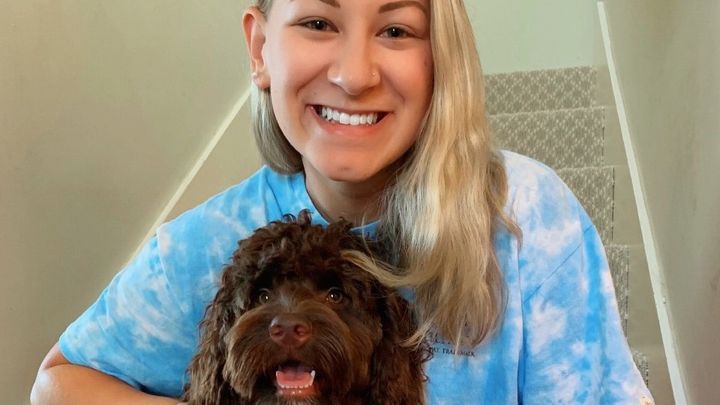
Diabetic Alert Dog for Bree!
Donation protected
When I had just turned 13 years old I received the life changing news that I had Type One Diabetes. I had been misdiagnosed the week before my hospital visit, resulting in a blood glucose level of 1,920 when I arrived at the hospital; for reference, the normal blood glucose target is around 120. This diagnosis was not due to something that me or my family had done wrong, like eating too much sugar. It is just something that happens. (If you are interested in learning more about Type One Diabetes, check out the link below.) My diagnosis was a pretty traumatic event for me and my family, and after spending nearly a week in the hospital we were sent home. We were almost completely clueless on what it meant to live with this disease, but had to learn quickly. What this meant for me at this stage of my life was multiple finger sticks per day, shots of insulin after every meal and snack, measuring out specific portions of food, and learning how to play the sport I loved with this new disease. These were things that did not come easy, but they were changes that had to be made. Over the years, managing my diabetes has become part of my everyday life and is something that I often do with little thought. I now wear an insulin pump, which eliminates the need for shots, and a continuous glucose monitor (CGM). This technology makes managing diabetes much easier, and eliminates much of the stress that comes with having Type One. However, I do experience glitches and malfunctions with my devices, as you do with any technology.
This past year I began my first year of college, which meant my first year managing my diabetes completely alone, which was very intimidating. High and Low blood sugars do not only occur as a result of exercise or eating, they can happen anywhere at any time. This includes during the night when I am asleep, during class time and exams, and when I am walking across campus. Wearing the CGM is an effective way to monitor my glucose, but there have been times when it has failed and resulted in threatening situations. This is why I made the decision that I want to pursue getting a trained Diabetic Alert Dog (DAD). These dogs are trained to sense raises and drops in blood glucose levels up to 30 minutes before any glucose monitoring system, like my CGM, can. The dog is trained to alert when they sense these changes in blood glucose, which allows me to correct my blood glucose level before it reaches a dangerous level. There are many advantages to having a CGM, and this system has saved my life many times. There are also downfalls to this system that can be addressed by a DAD. I feel like I have reached a point in my life where I would be safer, and able to better manage my diabetes with a DAD.
The funds that I need to raise will pay for all of the training that the dog will need to become a trained and licensed service animal. Any amount of money helps, and gets me one step closer.
To learn more about Type One Diabetes, check this out!
What is a Diabetic Alert Dog?
This past year I began my first year of college, which meant my first year managing my diabetes completely alone, which was very intimidating. High and Low blood sugars do not only occur as a result of exercise or eating, they can happen anywhere at any time. This includes during the night when I am asleep, during class time and exams, and when I am walking across campus. Wearing the CGM is an effective way to monitor my glucose, but there have been times when it has failed and resulted in threatening situations. This is why I made the decision that I want to pursue getting a trained Diabetic Alert Dog (DAD). These dogs are trained to sense raises and drops in blood glucose levels up to 30 minutes before any glucose monitoring system, like my CGM, can. The dog is trained to alert when they sense these changes in blood glucose, which allows me to correct my blood glucose level before it reaches a dangerous level. There are many advantages to having a CGM, and this system has saved my life many times. There are also downfalls to this system that can be addressed by a DAD. I feel like I have reached a point in my life where I would be safer, and able to better manage my diabetes with a DAD.
The funds that I need to raise will pay for all of the training that the dog will need to become a trained and licensed service animal. Any amount of money helps, and gets me one step closer.
To learn more about Type One Diabetes, check this out!
What is a Diabetic Alert Dog?
Organizer
Bree Reed
Organizer
Advance, NC


